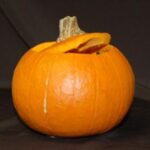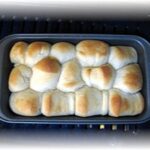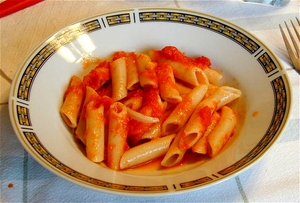The simple, cylindrical figure of the rolling pin has endured for centuries and few kitchen gadgets can match this handy tool in terms of history and usefulness. As any rolling pin enthusiast or collector can probably tell you, the basic design of today’s rolling pin has not changed in centuries, so the one in your kitchen is probably very similar to the one your grandmother’s grandmother used in her kitchen. And chances are, she used it for the same purposes that you use yours for today – to roll out dough when making cookies, pies and other items.
Historians are not certain where or how the rolling pin was originally developed, but many believe the first rolling pins were used for flattening pasta dough. But as long as dough has existed, early people searched for a way to flatten and shape it. Before the rolling pin was invented, hands, branches, bottles and even bricks were often used to flatten dough. Today’s modern rolling pins tend to be made from wood, but others are available in stainless steel, chrome, marble, glass, ceramic, porcelain and even plastic.
Although rolling pins are available in a variety of sizes, there are three basic types:
1) Rods – often called French rolling pins – which are about two inches in diameter and feature a one-piece design with a tapered end. These rods are designed so that the cook’s hands remain close to the dough while working.
2) Pins which feature a basic cylinder with a pin center and handles on each end.
3) Textured – available in either rod or pin form, these tools feature textured, rather then smooth, rolling surfaces for imprinting dough with various designs.
Regardless of which type of roller you choose, you’ll find that there are a variety of of ways in which the rolling pin can be used, including:
• Collecting. Rolling pins are a valuable collectors item and many are handed down from generation to generation. Vintage rolling pins are easy to find at antique stores and online and once you have your hands on one, it’s wonderful to wistfully dream of the kitchens they once graced.
• Giving a back massage. Anyone who has taken part in a home-birth probably knows that the average rolling pin doubles nicely as a back massaging tool whether in labor or simply suffering from a back ache. Rolling pins are also good for leg massages and foot massages – but for sanitary purposes, keep two rolling pins on-hand, one exclusively for kitchen use and another to be used as a massaging tool.
• Measuring. Most rolling pins are 10 or 12 inches long so serve nicely as an impromptu measuring device.
• Plant stake. Although they don’t wear down or fray very easily, an old rolling pin that is no longer useful in the kitchen doubles very nicely in giving support to a tomato plant, rose bush or other plant. Old French-styled rolling pins, without the handles, work very nicely for this purpose.
• Crushing things. Rolling pins come in handy when crushing cookies, crackers or chips to make crumbs. Simply place the items in a plastic bag, place on a counter and gently roll the pin over the bag to crush the contents. A rolling pin can also be used to crush nutmeg and various nuts and spices.
• Flattening bread. This comes in handy when working with bulky hand-cut breads that are too thick – simply roll a rolling pin over them to flatten them a bit. Thick sandwiches can also be flattened with a rolling pin.
• Making homemade paper. As the final step (before drying), use a rolling pin to squeeze out excess water when making homemade paper. There are great recipes online that offer instructions for making paper at home.
• Rolling candle wax. When making homemade candles, use a rolling pin in the final stage – rolling the wax. A number of Web sites offer fabulous instructions for making homemade rolled candles.




